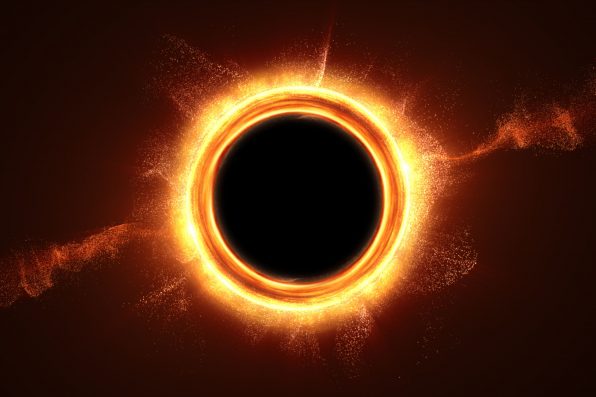At the center of the Milky Way, there is a supermassive black hole named Sagittarius A* that is located 26,000 light-years away.
It is 14.6 million miles wide and is four million times the mass of the sun. The black hole spins incredibly fast, at an angle that does not align with the rest of the galaxy.
For a long time, astronomers didn’t know why that was, but new data from the Event Horizon Telescope has revealed a clue about the black hole’s past.
Billions of years ago, Sagittarius A* was born from a cataclysmic merger with another giant black hole. To this day, it still shows the effects of the aftermath of the collision.
“This discovery paves the way for our understanding of how supermassive black holes grow and evolve,” said Yihan Wang, the lead author of the study and an astrophysicist at the University of Nevada, Las Vegas.
“The misaligned high spin of Sgr A* indicates that it may have merged with another black hole, dramatically altering its amplitude and orientation of spin.”
Sagittarius A* only consists of 0.0003 percent of the Milky Way’s mass. Every so often, it sucks in matter and spits it out at high speeds, shaping our galaxy.
Scientists believe the black hole started out just like any other. It was born from the collapse of a giant star or gas cloud and consumed anything that got too close to it. After expanding to a gargantuan size, it fed on other supermassive black holes.
When whole galaxies merge together, supermassive black holes occur. In the Milky Way’s disk, there are bumps and kinks that suggest it collided with at least a dozen galaxies over the past 12 billion years.

Sign up for Chip Chick’s newsletter and get stories like this delivered to your inbox.


